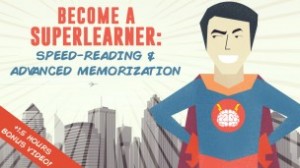When teaching the advanced material of high-level visualization we put a great emphasis on analytical skills. This skill is required to eliminate introduction of false knowledge. False knowledge is generated when we build inaccurate markers not supported by text. We teach to eliminate false markers only after the students can generate and replace visualiations without difficulty.
How is this advanced material different from the basic course and what is required? In basic course we put an emphasis on creativity and visualization. The students are asked to create visual markers as fast as possible and keep the markers as elaborate as possible. This ability allows subvocalization suppression and leads to higher reading speed and retention.
However, some of the students tend to create associations not supported by text. By “support” we mean something discussed in text, or clearly derivable from the text using common sense and student’s knowledge base. When generating some cool associations, the students tend to give their association a life in itself, adding more and more elaborate details from the imagination. This creative fun is good when learning basic skills, but may come as a challenge when trying to improve the knowledge.
In the advanced course we ask the student repeatedly: where within the text is the “support” for the marker or the link you are going to create? The markers not supported by text lead to misunderstanding and false knowledge. False knowledge here is something that we know is true, but in fact it is not supported by any evidence. Once you get false knowledge, it is very hard to “unget” it or to override it by true understanding.
Consistency is another key analytical skill. The false knowledge tends to bridge the gaps in the true knowledge. Every time the true knowledge is inconsistent, we will try to fill the gap with our own imagination. By keeping consistency of markers, links and themes of mental imagery we ensure fewer places for false knowledge. So we ask our students to add the markers that are most consistent with previous markers already used within the the text and keep high-level visualization within one storyline and artistic style.
A third analytical skill we often ask our students to use is prioritization. Often it is more important to have minimum false knowledge that to have maximum true knowledge. For every piece of knowledge our student learns we ask him “will this knowledge create a confusion”? If so we ask to choose between discarding the new knowledge or creating a supporting “devices” to eliminate confusion.
The analytical skills are as important for superlearner as is creativity. True balance between the two is created by practice. Contact [email protected] for more instructions.

Get 4 Free Sample Chapters of the Key To Study Book
Get access to advanced training, and a selection of free apps to train your reading speed and visual memory

